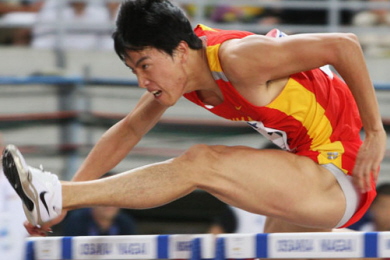Introduction
Up until now, the majority of the treatment has been based on hearsay from "Make sure you do your stretches" to "Go for an easy run or walk tomorrow to loosen yourselves up". All sounds familiar but what does the evidence say? In a recent systematic review (the highest form of evidence) physiotherapeutic interventions are studied to see what is the best form of treatment for delayed onset of muscle soreness (DOMS)
What is Delayed Onset of Muscle Soreness (DOMS)?
Our muscles contract in a number of ways. A concentric contraction is the one we're most familiar with where our muscle shortens (ex: our biceps shorten when we bend our elbow). An eccentric contraction is when our muscle lengthens while still exerting force (ex: a hurdler's hamstring while jumping over a hurdle is in a lengthened position but is still contracting). When one tears their hamstring, the hamstring is usually eccentrically contracting at that time.
Physiotherapeutic Interventions for DOMS
- Cryotherapy (ice)
- Stretching
- Low Intensity Exercise
- Massage
Cryotherapy
The studies did show a decrease in muscle soreness at 48 hours (1.22cm on a 10cm visual analogue scale - pain measuring tool) and at 72 hours (2.11cm on the same scale). However as the studies were so diverse, it was difficult to pool the results therefore these statistics should not be relied upon.
The studies also noted an improvement in muscle strength at 24 hours (6.93% increase) however again as the studies were not similar in format, we cannot rely on these results.
Stretching
The authors however found no positive effects of any form of stretching on both muscle soreness and muscle strength following DOMS
Low Intensity Exercise
Massage
You don't have to be a mathematician to realise that a 0.33cm decrease in pain and a 1.87% increase in muscle recovery does not make for vast improvements. So is there any point in massage if the benefits are so small?
Overview
- Massage slightly improves muscle soreness and muscle recovery at the 24 hour stage following high intensity exercise
- Cryotherapy may or may not decrease muscle soreness and improve muscle strength at various stages following high intensity exercise. More evidence is needed in this area
- There is no evidence to support stretching or low intensity exercises in the prevention of DOMS
Does this ring true to you? Do you find there are few benefits of the above interventions when you're suffering from exercise-induced muscle damage? Should we stick to the evidence or follow the advice passed down from generations before? Comment below and let us know what you think!
References
McHugh M. P., Connolly D. A. J., Eston R. G., Gleim G. W. (1999): Exercise-Induced Muscle Damage and Potential Mechanisms for the Repeated Bout Effect. Sports Medicine 27(3): 157-170
Torres R., Ribeiro F., Duarte J. A., Cabri J. M. H. (2012): Evidence of the physiotherapeutic interventions used currently after exercise-induced muscle damage: Systematic review and meta-analysis. Physical Therapy in Sport, 13(2): 101-114



 RSS Feed
RSS Feed
